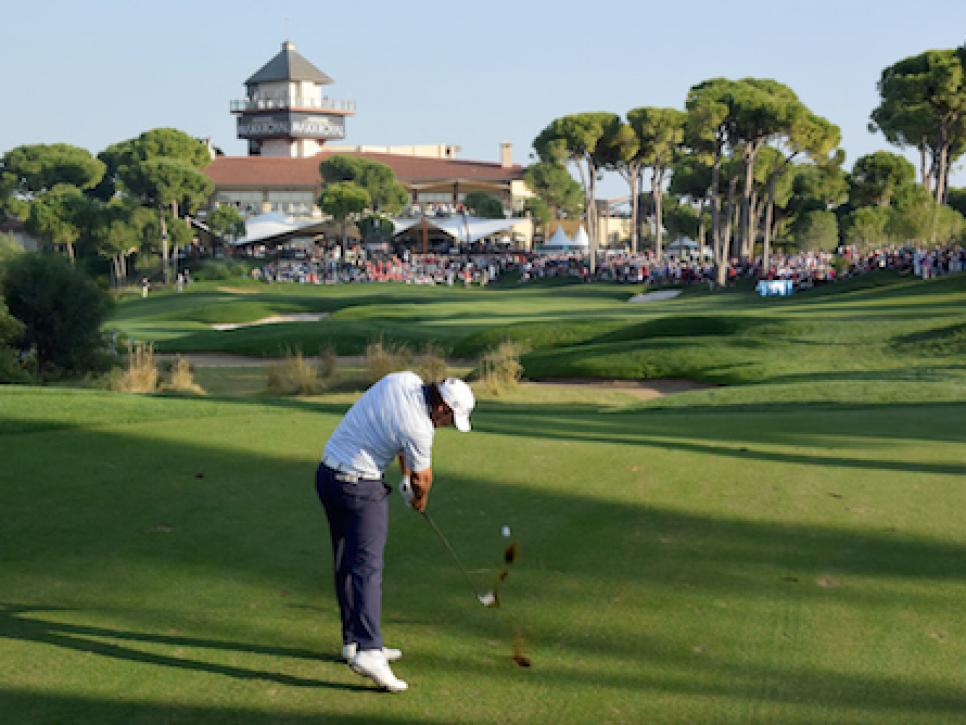The Loop
How He Hit That: Brooks Koepka's pressure-proof irons
Amid all the highlight reel-ready shots Brooks Koepka hit Sunday to shoot 65 and win his first European Tour event at the Turkish Airlines Open, it was a basic 9-iron on the last hole that stood out most prominently to Claude Harmon III, Koepka's teacher.
"We've been talking for a year now how, under pressure, it's important to stay aggressive, keep his body speed up and hit it hard," says Harmon, one of Golf Digest's 50 Best Teachers. "He had to punch out from behind a tree on 18, and he got up and ripped a 9-iron right at the flag, and hit it to 10 feet."

Koepka would par the last hole--a relatively calm ending to a round that saw him make five birdies and an eagle against no bogeys. He hit a 250-yard hybrid to eight feet on the par-5 13th to set up the eagle that would give him a two-shot lead over Ian Poulter. Poulter missed a birdie putt on the last to give the 24-year-old Koepka his first win, and the inside track to the European Tour rookie of the year award. Koepka earned enough in 16 PGA Tour starts in 2014 to secure his card there as well, and he'll play both tours in 2015.
"The best players really fire the body through impact," says Harmon, who is based at the Butch Harmon Floridian in Palm City, Fla. "They're increasing speed, not slowing down. Bad shots tend to happen when the body slows down and the hands take over through impact.
"I'll hear average players say all the time that their swing is 'too quick,' but really what they mean is that their arms are moving too fast but the body isn't moving fast enough, and they end up using all arms to hit the shot," says Harmon. "Take your setup without a ball, and go from address right up to the finish with no backswing, with as much speed as you can. Do that five times, then work your way back incrementally, until you get to a full backswing. The body movement and speed you need will start to happen much more naturally."